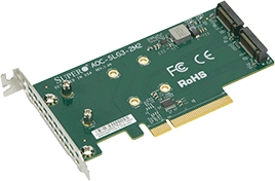Read Ahead Policy - Read Ahead Policy (RAID Settings).
| F.A.Q. • SupportRead Ahead Policy
- The read-ahead policy determines whether the RAID controller will read only the block of data requested by the application, or whether it will read the entire strip from the hard drives.
- This setting can have a big impact on read performance.
No Read Ahead (Normal) - No Read Ahead (Normal)
- The RAID controller reads only the block of data requested by the application. This mode is preferred when read requests are mainly random.
- Also, this mode is recommended when measuring sequential read throughput using IOmeter* on Windows.
Always Read Ahead
- The RAID controller reads the entire strip containing the requested data block and stores it in cache.
- Each read operation consumes more hard disk resources, but if the read requests are mainly sequential, this can significantly reduce the number of read requests on the hard disks and significantly increase performance.
- Note: this setting will only make a difference if the typical size of a read request is smaller than the bar width.
Adaptive Read Ahead- Adaptive Read Ahead
- The RAID controller automatically adjusts read policies based on the current pattern of read requests.
- It combines the advantages of No Read Ahead and Always Read Ahead modes.
- This mode is recommended if the workload has mixed sequential and random patterns or if the pattern is unknown.
Related Pages:
- RAID Types 0, 1, 5, 6, 10, 50, 60 & RAID Calculator (What RAID level to choose for a server?)
- Supermicro Storage Platforms
- Supermicro AOC-S3108L-H8IR Broadcom 3108 SAS3 Raid Controller 1, 5, 6, 10, 50, 60
- Cable for Supermicro RAID, HBA, JBOD Controller - Compatibility Matrix
- New SAS-4 (24G) RAID controllers AOC-S4116L-H16IR and AOC-S4116L-H16IR-96DD available from Supermicro




